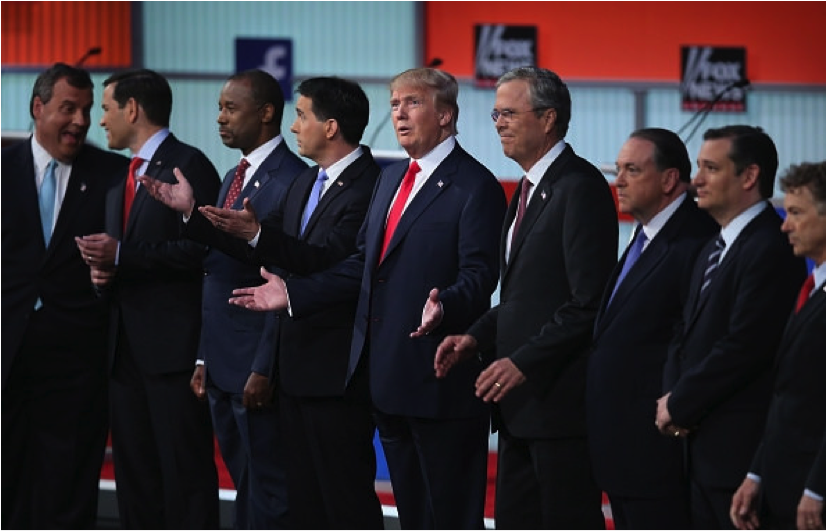When most Americans think about choosing a party’s presidential nominee, they likely imagine voting booths and secret ballots, not crowded gymnasiums and hand-raising. But for the voters of caucus states that process is the reality of primary election season. Those states — or, more precisely, the political parties in those states — use caucuses to decide who receives the state’s delegates at the parties’ respective nominating conventions. In its most general form, a caucus is a physical meeting, typically including a public vote with raised hands, where registered voters in each party decide which candidate the group will support. While public votes and healthy debate might sound like good old-fashioned local democracy, caucuses actually filter out certain voters and distort electoral outcomes. By amending caucuses to make them more inclusive or incentivizing parties to switch over to primary elections, the presidential nomination process would become more accessible and representative of the country’s voters as a whole.
Given their history, it shouldn’t come as a surprise that caucuses do not always do justice to democracy. In the late 1700s and early 1800s, caucuses began as closed meetings, accessible only to members of Congress and party elites. Since the 1830s, caucuses have gradually become more representative as they’ve expanded to include party members outside of Congress, although most of the action and influence remain in the hands of party insiders. As recently as 1968, only one-third of states allocated delegates based on direct referendum voting.
Instead of amending their caucuses, many state parties decided to switch over to primary elections. By 1976, 13 states that had previously used caucuses began using primaries, and 12 more followed suit. The McGovern-Fraser Commission opened up the Democratic Party’s caucuses, which in turn catalyzed state legislatures to make Republican primaries more accessible as well.
Because the reforms in place aimed at giving the people more of a say in the nominating process were generally successful, the caucuses that remain today have come to paint a rosy picture of democracy at its finest: communal gatherings that foster intimate engagement with politics. But that civic engagement is actually limited to a small group of politically active voters. Caucuses may benefit those who participate in them, but they emphasize the voices of the few at the expense of the many, creating what some may call a tyranny of the minority.
Participation rates for caucuses make the already abysmal overall voting rates look like shining examples of civic virtue. In 2016, the turnout for the Iowa caucuses was 15.7 percent, a decrease from the all-time record of 16.3 percent in 2008. Comparatively, these numbers are substantially higher than the 6.8 percent turnout average in 2008 for all states using caucuses.
When fewer than one in ten people in caucus states make an appearance, parties ought to identify the barriers limiting participation, most notably logistical inaccessibility. Unlike primary elections, which permit all-day voting, caucuses have rigid participation times. Voters who have to work during the caucuses, take care of children or family members, or otherwise cannot commit to the extended time period — it often takes more than an hour to caucus — are effectively disenfranchised.
Studies don’t show definitive or significant differences between the demographic and ideological makeup of caucus voters and primary voters. Even so, the drastically higher turnout at primaries compared to caucuses suggests that results of caucuses may not depict the desires of the people as accurately as primaries. Voter turnout at the 2008 primaries was four times that of the 2008 caucuses. When different voting systems produce such different turnout rates, there are structural factors affecting who will win each state’s delegates and become the presidential nominees.
It’s much easier to bemoan the problems with caucuses than to do anything about them. Two paths may help fix the problems with caucuses while maintaining the benefits of local democracy: making caucuses more representative or replacing them with primaries. To prevent the overrepresentation of a specific voter demographic, states could use technology to operate caucuses for military voters or voters who are otherwise unable to get to their precinct locations on caucus night. Primary elections already allow for absentee ballots; caucuses could do the same. In fact, the 2016 Iowa caucus took the initiative to modernize voting by including previously excluded voters. For the first time, the state used Tele-Caucus for military voters and satellite caucuses for voters with accessibility problems. Votes recorded by Tele-Caucus and satellite caucuses were lumped in with overall state results on the parties’ websites, which makes it difficult to attribute the increase in participation to these new accommodations. Regardless, these introductions send a signal to Iowans that previously excluded voices matter in the primary election.
To increase accessibility, state parties can additionally simplify caucus procedures to prevent voters from being driven away by lack of familiarity with the process. At many caucuses, participants are forced to sit through speeches, reorganize themselves throughout the night, and declare their preferences in front of everyone else. There isn’t even uniformity within a particular state: Each party can run its caucus differently. But the solution lies in active communication. By informing citizens of the process early on — whether through mass media or mailing initiatives — states can demystify the caucus process and invite more voters.
Perhaps the solution with the highest potential for positive change in caucus states would be switching over to primary elections. This would certainly cause pushback: parties are wary of ceding power to the government, especially regarding the date of elections and who can participate in them. But if those states — recognizing that primaries garner higher turnout, thereby increasing civic participation — are willing to give the parties control over how primary elections will be conducted, then it’s likely that the parties will change to state primaries. Relinquishing power over the nominating process may be hard to stomach, but changing caucuses to primaries is a good step toward revitalizing the primary election process.

Art by Sophie Gibson
